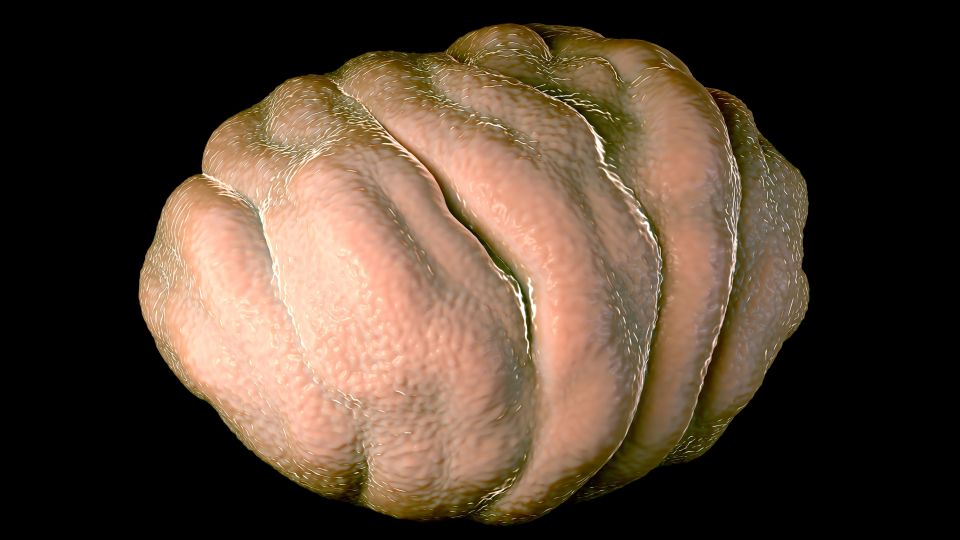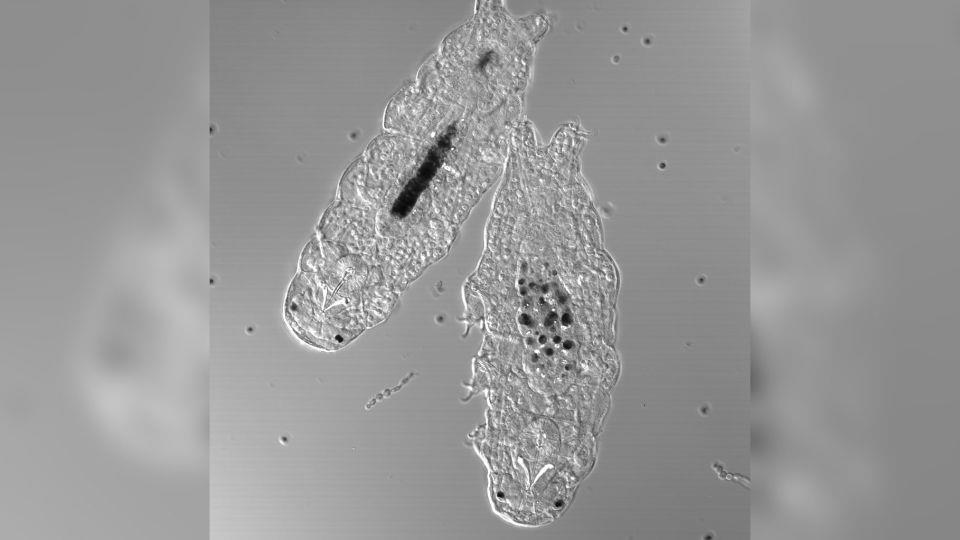Sign up for CNN’s Wonder Theory science newsletter. Explore the universe with news on fascinating discoveries, scientific advancements and more.
Tardigrades, also known as water bears, commonly survive in some of Earth’s most challenging environments. The microscopic animals are so extraordinary that they have even traveled to the International Space Station for research.
When the going gets rough, the astonishingly hardy creatures are capable of entering a form of suspended animation, called the “tun state,” for decades. Now, researchers say they have unlocked the mysterious mechanism that activates the animals’ survival mode — and the work could have implications for humans — according to a new study.
Under stress in extreme cold or other harsh environmental conditions, tardigrades’ bodies produce unstable free radicals of oxygen and an unpaired electron, aka a reactive oxygen species that can wreak havoc on the body’s proteins and DNA if they overaccumulate. (Yes, this oxidative stress is the same physiological event humans experience when stressed and why health experts suggest you eat loads of blueberries and other antioxidant foods when having a hard week at work.)
The survival mechanism kicks off when cysteines, one of the amino acids that forms proteins in the body, come into contact with these oxygen free radicals and becomes oxidized, the researchers found. That process is the signal that lets the tardigrade know it’s time to go into the protective mode of tun. The free radicals become, so to speak, the hammer used to smash the glass on a fire alarm.
The findings were published January 17 in the journal PLOS One.
The revelation could eventually help in the development of materials that can respond to harsh conditions such as deep space or therapies that could disarm cancer cells, said lead study author Amanda L. Smythers, a postdoctoral research fellow at Dana-Farber Cancer Institute and Harvard Medical School in Boston.

An illustration shows a tardigrade in its dormant state when it goes into the protective mode of “tun” against stressors. – RoyaltyStockPhoto/Science Photo Library RF/Getty Images
‘A eureka moment’
In unforgiving habitats as varied as Antarctica, mountain peaks and deep-sea vents, tardigrades facing extreme temperatures or dehydration will retract their eight arms and decrease the amount of water they’re storing.
The water bears shrink to one-quarter of their normal size. The usually linear and somewhat chunky-looking invertebrates transform into protective, dried-out balls in the tun state, lying dormant in environments that would kill most other life-forms.
Smythers and researchers at the University of North Carolina at Chapel Hill and Marshall University in Huntington, West Virginia, first started looking at this phenomenon thanks to a growing body of literature that suggested cysteines were involved in kicking off the tun process, she said.
“When we were looking at the list of all these crazy circumstances that tardigrades can survive — space, in a vacuum, a high salt concentration like when an ocean starts evaporating — the one thing that really connected all of these things were reactive oxygen species,” Smythers said. “It was actually a bit of a eureka moment.”
Over the past decade, researchers have started to understand that reactive oxygen species, free radicals that were once considered completely “problematic,” Smythers said, may be “really important for our bodies to work and be able to adapt to different stresses.”
Earlier studies said that instead of the free radicals helping initiate the tun process as protection against stressors, tardigrades were protecting themselves from free radicals. The body’s production of free radicals, Smythers and her coauthors found, is instead part of the process of helping the tardigrade protect itself by curling into a hard-shelled ball resistant to extreme heat, cold or other environmental factors.
“We came up with this idea (that) maybe it’s those species that are actually signaling to the tardigrades to enter their tun state,” she said.
First, an off-the-books experiment
Before setting up the longer process used in the study, Smythers called on an undergraduate to help do a quick experiment and test her early hypothesis about reactive oxygen species and their role in starting tun formation.

The microscopic invertebrates live in habitats as diverse as Antarctica, deep-sea vents, mountain peaks and tropical rainforests. Two active water bears are shown. – Amanda Smythers
Smythers asked the student to head to a drugstore and get some peroxide — a common free radical. With Smythers watching the experiment on FaceTime, the student dropped some peroxide on a water bear to see what would happen.
“All of a sudden, it started squeezing in. Its legs started going into its body. It started shrinking down. It became the quintessential tun that we know to expect,” Smythers said.
How tardigrades’ secret could help humans
The research wasn’t done just to find out how the animals fare in cruel environments they often live in. Smythers said the findings could help researchers develop materials that can respond to harsh conditions — such as the engineering of firefighter gear that could create a protective shell when conditions get too extreme — or the development of better chemotherapeutics to destroy malignant tumors by interrupting the protective measures that make cancer cells so challenging to kill.
The finding is exciting to Dr. William R. Miller, a research assistant professor at Baker University in Baldwin City, Kansas. Miller, who has studied and written about tardigrades, was not involved with this research.
“That would be superb, finding other ways that these mechanisms can be used to control cancer,” Miller said.
Miller said he was impressed with Smythers’ ability to imagine ways the tardigrade research could be implemented for cancer research and other areas. He said it takes another “level of mind and thinking to find the translocation of one technique or one combination of things to a very distant one. We need more of that.”
Jenna Schnuer is an Anchorage, Alaska-based freelance writer, editor and audio producer who focuses (mostly) on science, art and travel.
For more CNN news and newsletters create an account at CNN.com
News Related-
The best Walmart Cyber Monday deals 2023
-
Jordan Poole took time to showboat and got his shot blocked into the stratosphere
-
The Top Canadian REITs to Buy in November 2023
-
OpenAI’s board might have been dysfunctional–but they made the right choice. Their defeat shows that in the battle between AI profits and ethics, it’s no contest
-
Russia-Ukraine Drone Warfare Rages With Dozens Headed for Moscow, Amid Deadly Winter Storm
-
Trump tells appeals court that threats to judge and clerk in NY civil fraud trial do not justify gag order
-
Can Anyone Take Paxlovid for Covid? Doctors Explain.
-
Google this week will begin deleting inactive accounts. Here's how to save yours.
-
How John Tortorella's Culture Extends from the Philadelphia Flyers to the AHL Phantoms
-
Tri-Cities' hatcheries report best Coho return in years
-
Wild release Dean Evason of head coaching duties
-
Air New Zealand’s Cyber Monday Sale Has the 'Lowest Fares of 2023' to Auckland, Sydney, and More
-
NDP tells Liberals to sweeten the deal if pharmacare legislation is delayed
-
'1,000 contacts with a club': Tiger Woods breaks down his typical tournament prep to college kids in fascinating video
